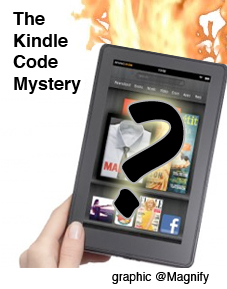Editor’s note: Guest contributor Steve Rosnebaum is CEO of Magnify.
With two weeks to go before Amazon ships its highly anticipated Kindle Fire to the first 500,000 pre-order customers, folks in the developer community are finding it hard to sort out just what flavor of Android will run on the platform. One thing is for sure, Mobi is out—as Amazon embraces both HTML5 and CSS3 in the new format.
Today Kindle Format 8 powers the book reader on the Kindle Fire device, and Amazon is now telling developers that KF8 will be available on all Kindle e-ink devices in months ahead, and importantly, KF8 will be available on the free Kindle reading apps as well. This means KF8 should be available on the iPad—which could be very interesting.
KF8 is a major improvement over Mobi, with 150 new formatting styles including embedded fonts, drop caps and CSS selectors such as line spacing, alignment, justification, margin, color, style and borders.
But, as of today, the tools to build in the KF8 format aren’t available—with ‘coming soon’ being as much as we know for the important KindleGen2 Publisher Tool and Kindle Previewer 2. Even the Kindle Publishing Guidelines aren’t yet published, leaving content owners with a lot of enthusiasm, but little actionable information.
Kindle Fire will be backwards compatible, so all content published in Mobi format will work on the new devices, which may be one reason that Amazon isn’t rushing to put the KF8 tools in the market. Kindle Fire will launch with plenty of content, just not as snazzy as it could be if HTML5 and CSS3 specs for the device were in the hands of content owners a bit earlier.
Once the Kindle Previewer 2 is available, publishers will be able to port old titles over from Mobi, and see how they appear on a range of new Kindle devices and free reader apps.
So, for the ‘reader’ content world, there’s a clear path to the new world of KF8 – even if the timing of the publishing guidelines and tools are somewhat fuzzy.
But, for Kindle Fire App developers, the roadmap to the device is less clear.
The Kindle Fire is a tablet built on Android. Amazon developers forked Android along the way (rumors say either the Frozen Yogurt 2.2 or Gingerbread 2.3.4) Actually this a tablet built off a smartphone OS and not the current Android tablet OS, Ice Cream Sandwich.
All developers know for sure are the specs of the device, and what it won’t support.
At a high level, it must be optimized for Android 2.3.4 (Gingerbread) and a 7″ screen with a resolution of 1024 x 600. Your app cannot require Google Mobile Services (GMS), a gyroscope, camera, WAN module, Bluetooth, microphone, GPS, or micro-SD to function. Adobe AIR is pre-installed on Kindle Fire. And Amazon says that to increase the ‘probability’ that your app will be compatible with Kindle Fire, you should only use Ice Cream Sandwich APIs that are backwards compatible with Gingerbread. What about testing? Amazon suggests developers configure a standard Android emulator to simulate the Kindle Fire device platform at this time.
It seems like the current focus at Amazon is testing the entire existing Amazon Marketplace Android marketplace, and then alerting app developers know if their app will work on the Kindle Fire. If it fails QA, then developers have a chance to make fixes and republishing the app in the Android Marketplace.
Given the massive content resources of Amazon, it appears that the tablet wars are going to be a major theme of 2012. Already JP Morgan is reporting sales of the Fire on pace to sell up to 5 million units in Q4 of 2011. A fast start against the iPad market which currently reports 32 million iPads in consumer’s hands.
The blog Cult of Android reported a “source” provided it with “exclusive screenshots of Amazon’s internal inventory system” showing that 254,074 Kindle Fires were pre-ordered in the first 5 days: “over 2,000 units per hour, or over 50,000 per day.” This puts the Kindle Fire on track to beat the iPad and iPad 2’s first-month sales
So, the Kindle Crusade is very much on a roll. Sales are robust. The KF8 standard will impact the current e-pub3 world. And the Kindle Fire will provide a new, large, and potentially profitable outlet for app developers once there’s clarity around the flavor of Android that will power the device and once the dev tools and an emulator make their way into the market.
If Fire ends up equalling Android Tablet, Amazon will have created a powerful edge in race to win the new portable content consumer.
